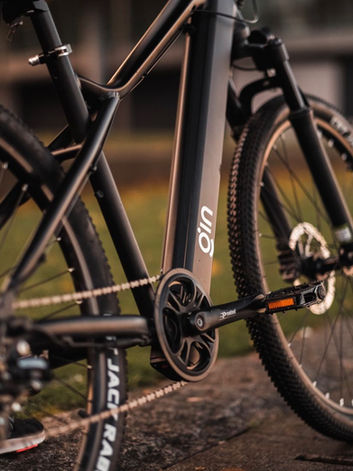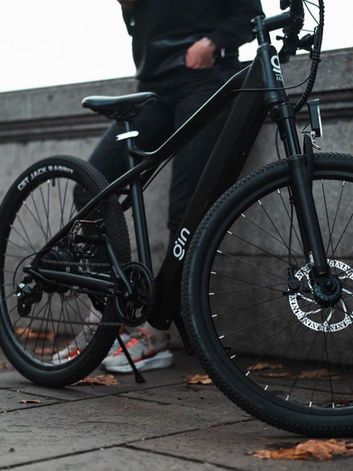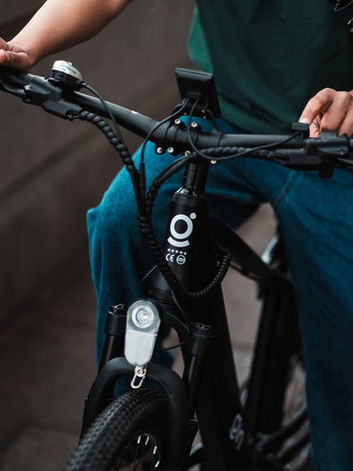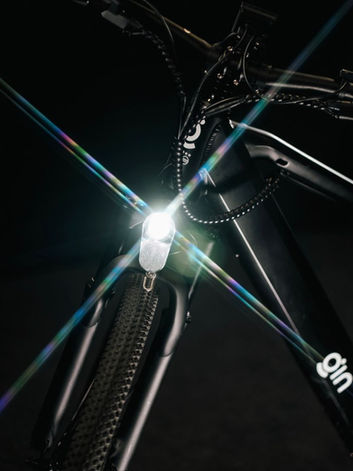
Fast Electric Bike - GIN X e-bike
Discover the Thrill of Speed with the GIN X E-Bike – One of the Fastest Electric Bikes in the UK from only £999!
How Fast Can GIN X Electric Bikes go?
Looking for an exhilarating ride on fast electric bike that combines speed and innovation?
Look no further than the GIN X E-Bike, your ticket to high-speed adventures. With its powerful 250W motor, this electric bike can effortlessly reach speeds of up to 25 mph, making it one of the speediest options on the market.
And for those seeking an even greater rush, the 500W motor variant pushes the boundaries, zooming up to an impressive 30 mph.
Choose speed. Choose GIN X E-Bike. Fast electric bike in the UK.
Unleash the Thrill: GIN X E-Bike – Your Ultimate Fastest Electric Bike
1.
High-Powered Bafang Motor: GIN X e-bike is equipped with both 250W and 500W motor options, allowing you to choose your preferred level of speed and power.
2.
Impressive Top Speeds: Reach up to 25 mph with the 250W motor and an exhilarating 30 mph with the 500W motor, providing an unmatched fast e-bike experience.
3.
Responsive Acceleration: Enjoy rapid acceleration that gets you up to speed quickly, ensuring a seamless and dynamic ride.
4.
Sleek and Aerodynamic Design: The GIN X fast e-bike is designed with aerodynamics in mind, reducing drag and maximizing your efficiency at high speeds.
Choose GIN X E-Bike for Unmatched Velocity – Your Fast Electric Bike Solution
👉 Check out our 250W and 500W e-bike models now

-
250W Brushless BAFANG Motor
-
75-150 miles Riding Range
-
20 Kgs (43 lbs)
-
22-25 mph max speed
From £999

-
500W Brushless BAFANG Motor
-
60-100 miles Riding Range
-
21 Kgs (46 lbs)
-
28-30 mph max speed
From £1199

Experience the wind in your hair as you zip through the streets, powered by cutting-edge technology and a commitment to performance. Whether it's conquering your daily commute or embracing the thrill of open-road exploration, as one of the fastest electric bike, GIN X E-Bike offers an unmatched combination of speed, style, and sustainability.
Get ready to redefine your notion of fast electric biking with the GIN X E-Bike – where innovation meets velocity, and the journey is just as electrifying as the destination.
Curious to truly grasp the distinction between 250W and 500W?
Experience the Distinction: GIN X E-Bike Showdown – 250W vs 500W
Immerse yourself in our captivating video that shines a spotlight on the GIN X 250W and 500W models, revealing their distinct top speeds and fast electric bike attributes. Join us as we navigate uphill challenges, explore power variations, and meticulously scrutinize battery endurance. This video is the ultimate revelation of how GIN X e-bikes deliver unparalleled speed diversity.
What is the Speed Limit for Electric Bikes?
A crucial parameter comes into play – the power of the motor. The maximum speed achievable by an electric bike is directly tied to the motor's power output, as the motor cannot generate more power than its specified limit. This power is typically measured in watts. Furthermore, legal regulations impose a speed limit on the assistance provided by the motor. Once this limit is reached, you have the freedom to propel the bike faster using your own pedaling effort.
Electric bikes are equipped with diverse types of motors, each possessing varying power levels, and consequently, distinct maximum speeds.
For instance, on an e-bike equipped with a 250W motor, the assistance mode can propel you to speeds of up to 15.5 mph (25 km/h) – this occurs when the motor is engaged and assists your pedaling. Naturally, you can exceed this speed under your own power. The speed limit signifies that the motor ceases to provide assistance once this velocity is reached.
Additional motor options exist, boasting higher power outputs such as 350W, 500W, and 750W. In the UK, e-bikes equipped with these more potent motors must be registered as motor vehicles. These higher-powered motors facilitate greater speeds with motor assistance.
Beyond these variants, there are even more powerful electric bikes available, with motor outputs ranging from 1000W, 3000W, 4000W, to 5000W and beyond. However, it's essential to exercise caution and be aware of the legal implications associated with these high-power options.
How Fast Can You Travel on an E-Bike?
To address these last two inquiries, let's revisit the initial points. Consider these examples of speeds achievable by regular cyclists on standard bicycles:
-
Novice rider covering 10—15 miles (16—24 km) — 10—12 mph (16—24 km/h)
-
Intermediate rider spanning 20—30 miles (32—48 km) — 15—16 mph (24—25 km/h)
-
Advanced rider tackling 40 miles (64 km) — 16—19 mph (25—30 km/h)
-
Highly experienced rider covering 50-60 miles (80—96 km) — 20—24 mph (32—38 km/h).
It's important to note that many individuals pedal at slower average speeds, such as 13—15 mph (20—24 km/h), during medium to long-distance rides on conventional bicycles. Consequently, riding at a slower pace is not uncommon.
However, when transitioning to an electric bike, you can easily achieve speeds matching these ranges, if not exceeding them, due to the reduced effort required with the assistance of an electric motor. Based on cyclist feedback and real-world practice, opting for a more powerful e-bike isn't typically necessary.
A motor output of 250W and a top speed of 15.5 mph (25 km/h) is generally more than sufficient for commuting or leisurely cycling.
In terms of urban environments, fast e-bikes equipped with motors more potent than 500—750W generate excessive power for city commuting. In countries like Germany, out of 400,000 e-bikes sold, only 5,000 were the faster electric bikes.
Here's an additional compelling reason for choosing a less powerful e-bike for city travel: The average driving speed within UK cities in 2017 was merely 7 mph (11 km/h). This is half the speed achievable on a pedelec e-bike.







